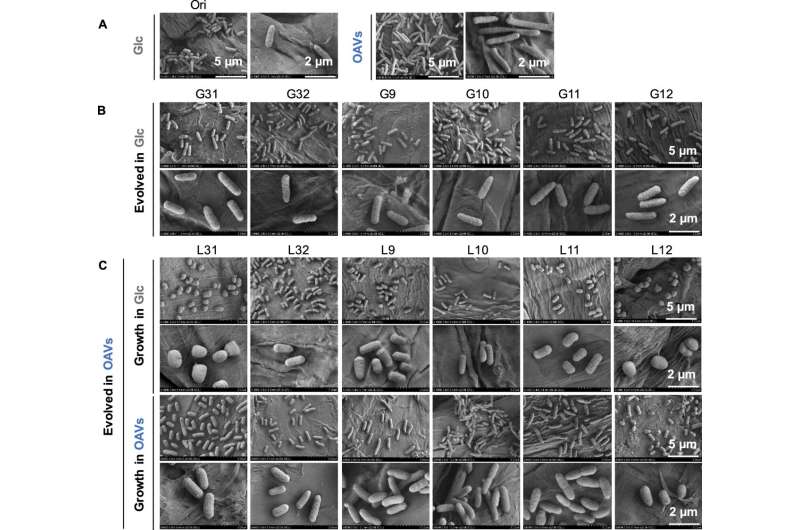New spheres of knowledge on the origin of life

The shape of a cell affects its physical and chemical properties. Different cell types have developed different shapes to enable effective functioning. But what shape were the very first cells, as life began to evolve?
Primitive cells are thought to have been spherical, but experimental evidence supporting this belief remains elusive. Now, however, researchers from the University of Tsukuba, in collaboration with East China Normal University, have shown that E. coli bacteria grown in a primordial-like environment become spherical.
The primordial environment on Earth is thought to have consisted of vesicles, or compartments, of fatty acids. Oleic acid is the most common fatty acid in nature and can be metabolized by E. coli. The team therefore mimicked primordial conditions by growing six different lineages of cells in an environment where the only available nutrient was oleic-acid vesicles (OAVs), rather than the more usual glucose sugar.
E. coli's usual rod shape allows rapid growth and nutrient uptake. However, their shape can change in response to their environment, turning into a filament when starved of nutrients. "Our team grew these bacteria in an OAV environment and found that as the cells better adapted to the new conditions, they grew more quickly, became spherical, and decreased in both size and area-to-volume ratio compared with the original parent cells (Ori cells)," says senior author Professor Bei-Wen Ying. "Even when we relocated these evolved cells (Evo cells) to a glucose environment, they maintained their new spherical shape."
The six different lineages of Evo cells all evolved to adapt to the OAV conditions without common mutations. Notably, two distinct strategies were observed: some cells developed mutations that directly targeted the cell wall so that the cell structure became spherical, while others accumulated mutations in other biological processes.
Three of the six lineages developed various mutations in the common crp gene. The protein product of crp acts as a regulator of transcription, the process by which the genetic information in the DNA is turned into a molecule known as RNA. "This implies that transcriptional regulation by crp may be crucial for E. coli to use carbon sources effectively," explains Professor Bei-Wen Ying.
This work is the first to show typically rod-shaped cells shifting to a spherical shape in a primordial-like environment, supporting the theory that when life began to evolve, the earliest primitive cells were spherical.
More information: Hui Lu et al, Primordial mimicry induces morphological change in Escherichia coli, Communications Biology (2022). DOI: 10.1038/s42003-021-02954-w
Journal information: Communications Biology
Provided by University of Tsukuba




















